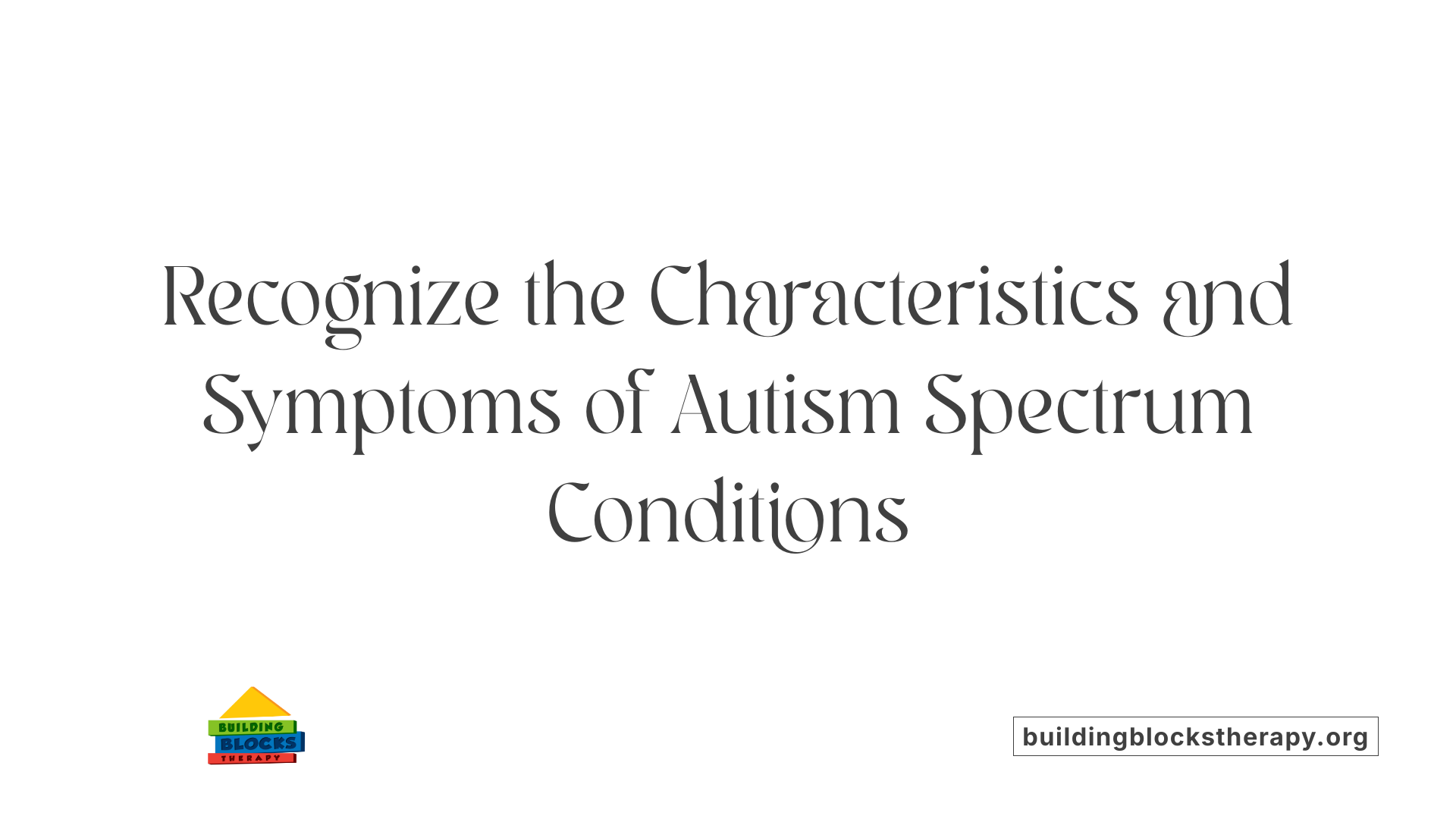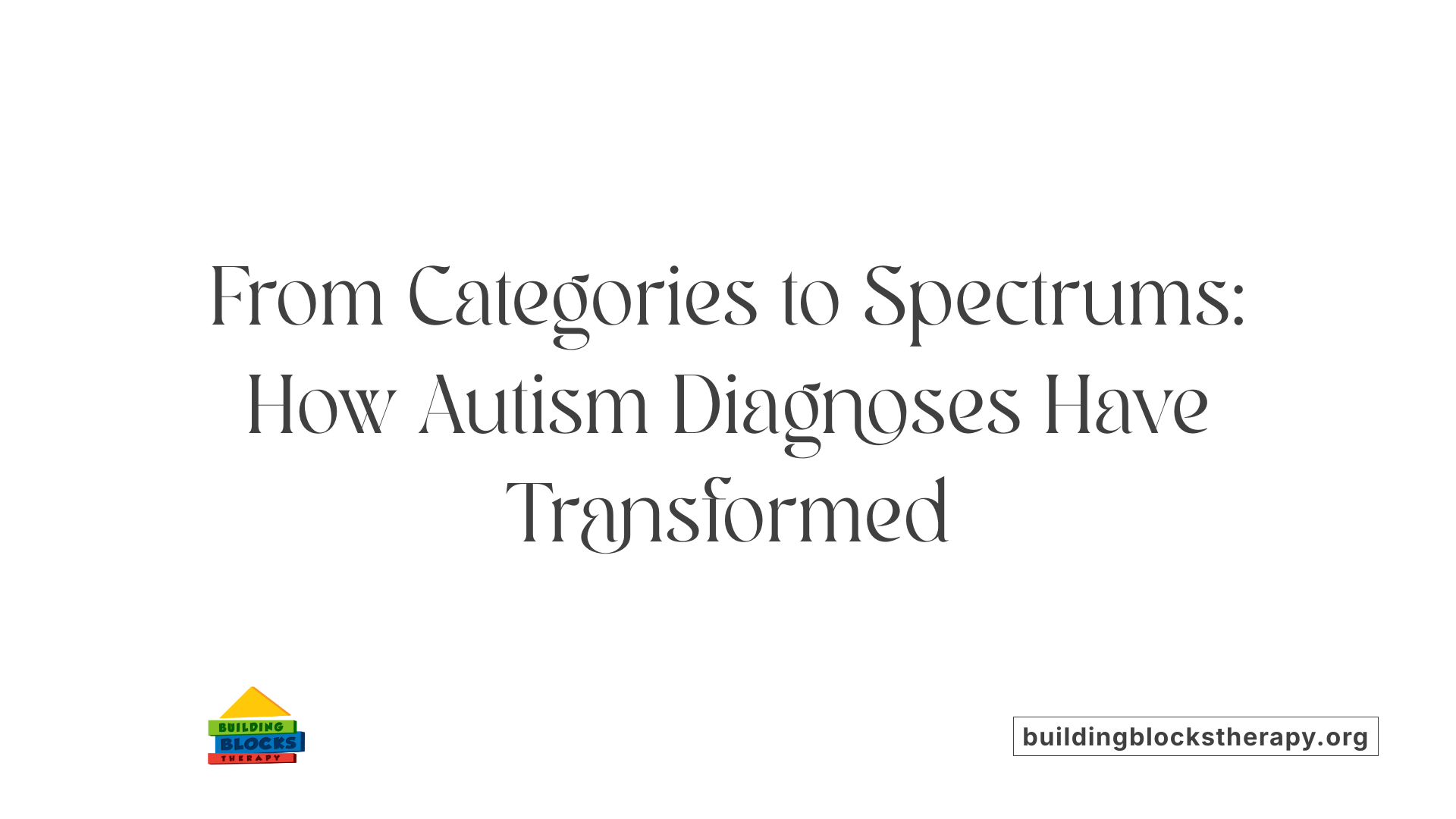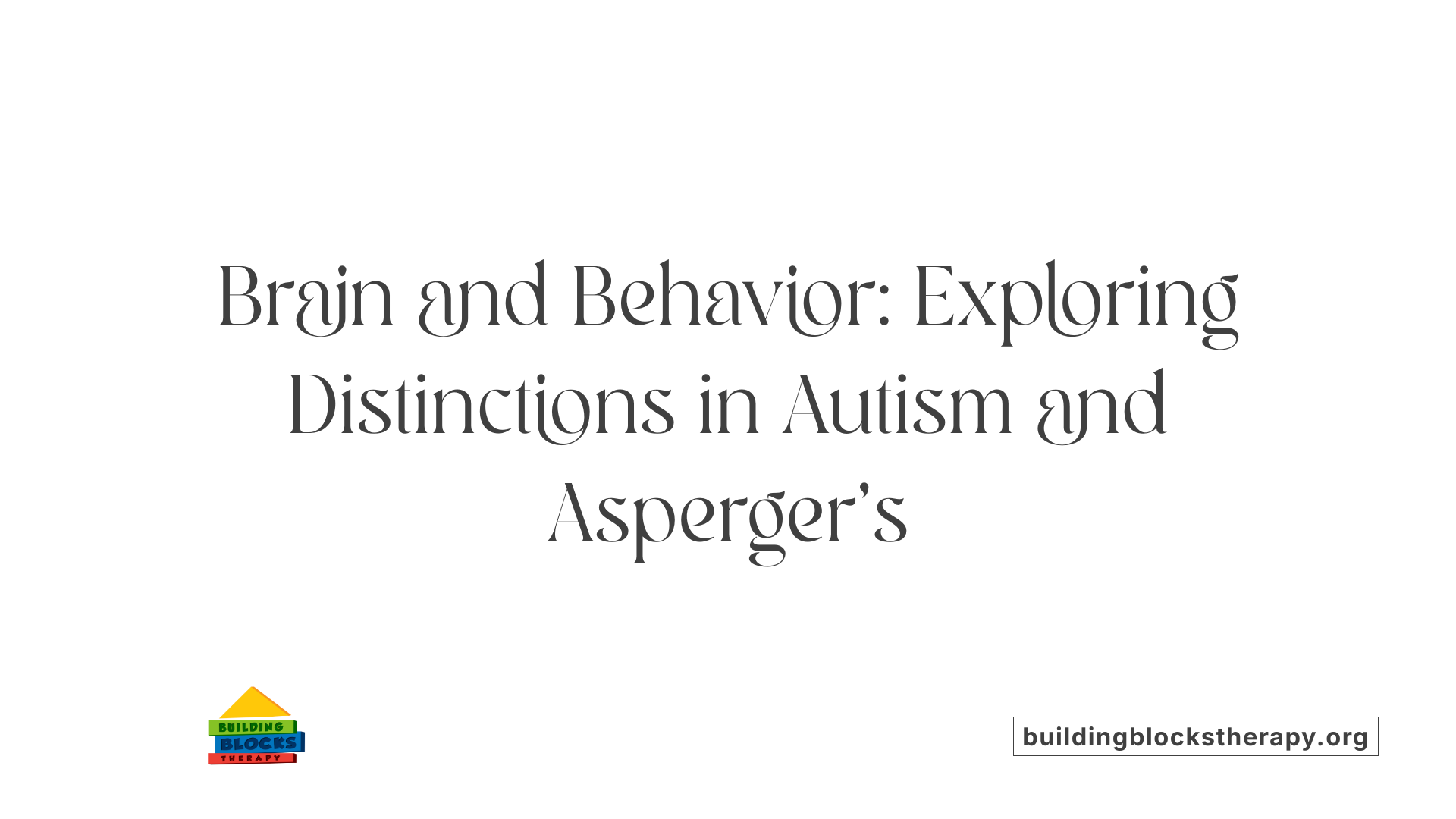Autism vs. Asperger's
Understanding the Spectrum: Autism and Its Variants

Exploring the nuances within neurodevelopmental conditions
Autism spectrum disorder (ASD) encompasses a wide range of neurodevelopmental conditions characterized by challenges in social interaction, communication, and behavior. Among these, Asperger’s syndrome was once considered a distinct diagnosis but is now integrated into the broader ASD category. This article delves into the differences, similarities, and evolving understandings of autism and Asperger’s, highlighting diagnostic trends, neurological distinctions, and support strategies.
Characteristics and Symptoms of Autism and Asperger’s

What are the characteristics and symptoms of Autism and Asperger's?
Autism Spectrum Disorder (ASD) and Asperger's syndrome share many traits, primarily challenges in social communication and repetitive behaviors. Individuals with these conditions often find it difficult to interpret social cues such as facial expressions, gestures, and tone of voice. They may struggle with making eye contact and engaging in back-and-forth conversations, which can hinder forming and maintaining relationships.
Repetitive behaviors and narrowly focused interests are common. For example, a person might have intense preoccupations with specific topics, routines, or objects, sometimes to the exclusion of other activities. Sensory sensitivities are also prevalent, meaning lights, sounds, or tactile sensations might feel overwhelming or uncomfortable.
In terms of language development, those with Asperger's typically have language skills appropriate for their age, often developing speech on a normal timeline. They usually possess average or above-average intelligence but might face difficulties understanding social norms, like interpreting sarcasm or humor.
Physical signs can include clumsiness, atypical body language, or unusual gestures. Adults and children may appear socially awkward, have trouble forming friendships, and exhibit behavior patterns that seem unconventional.
Diagnosing ASD involves observing behaviors and conducting assessments by specialists who evaluate social interactions, behavior, speech, routines, interests, and sensory responses. Although there's no cure, early intervention focusing on social skills, behavioral therapy, and supportive education can significantly improve social comfort and functioning.
Search query: Autism and Asperger's characteristics symptoms
People who want to learn more about these conditions should explore resources using the search phrase 'Autism and Asperger's characteristics symptoms' for detailed insights and current research updates.
Evolution of Diagnostic Classifications and Criteria

How have the diagnostic criteria and classification of autism and Asperger's evolved over time?
The understanding and classification of autism and Asperger's syndrome have changed markedly over the decades. Initially, autism was described by Leo Kanner in 1943, highlighting issues with social interaction and insistence on sameness. During the 1980s and 1990s, Asperger’s syndrome emerged as a distinct diagnosis in the DSM-IV (1994). It was characterized by individuals having typical language skills and average or above-average intelligence, but with notable social challenges and restricted interests.
However, in 2013, the DSM-5 introduced a major shift by consolidating these diagnoses into one umbrella term: Autism Spectrum Disorder (ASD). This move was based on extensive research showing significant overlap and the spectrum nature of these conditions. The criteria transitioned from strict categories to a dimensional approach, considering severity levels and functional abilities.
This change meant that what was once called Asperger’s syndrome is now classified under Level 1 ASD, often referred to as high-functioning autism. The diagnostic criteria in DSM-5 focus on social communication difficulties, repetitive behaviors, and sensory sensitivities, regardless of language development history.
Similarly, the International Classification of Diseases (ICD-11), updated in 2018, also reflects this spectrum concept, emphasizing a neurodevelopmental approach rather than separate diagnoses. These revisions influence not only clinical diagnosis but also access to services and societal understanding.
Overall, the evolution from categorical diagnoses to spectrum-based understanding has aimed to improve diagnostic accuracy, support individualized treatment planning, and foster a more inclusive perspective for those on the spectrum.
| Classification System | Year | Major Change | Diagnostic Implications | Reference Points |
|---|---|---|---|---|
| DSM-III | 1980 | Introduction of Pervasive Developmental Disorders | Started recognizing a broader range of developmental issues | Autism included as separate disorder |
| DSM-IV | 1994 | Asperger’s syndrome added as distinct diagnosis | Recognized high-functioning autism subtype | Diagnoses based on specific criteria, including no language delay |
| DSM-5 | 2013 | Autism Spectrum Disorder established | Unified autism and Asperger’s under one spectrum | Emphasis on severity, functional levels |
| ICD-11 | 2018 | Autistic disorders consolidated | Broader, spectrum-based classification | Focus on neurodevelopmental traits |
The ongoing updates reflect a growing understanding that autism presents uniquely across individuals, emphasizing support tailored to each person’s needs rather than fixed labels.
Neurological and Clinical Distinctions
 What are the neurological and clinical differences between Autism and Asperger's?
What are the neurological and clinical differences between Autism and Asperger's?
Neurologically, autism spectrum disorder (ASD) involves widespread differences in brain structure and connectivity. Brain imaging studies have found that individuals with ASD often exhibit lower grey matter volumes in key areas such as the cerebellum, hippocampus, and temporal lobes, which are crucial for processing emotions, memory, and social cues. Conversely, some regions like the caudate nucleus and prefrontal cortex may have increased grey matter, indicating atypical brain development. These widespread neuroanatomical differences support the diversity of symptoms seen in ASD.
Individuals diagnosed with Asperger’s syndrome, which is now included under ASD, show a somewhat different pattern. They tend to have lower grey matter volumes mainly in the right hemisphere, including the amygdala, hippocampus, and cerebellum. At the same time, they often display higher grey matter in left hemisphere regions like the fusiform gyrus and inferior parietal lobule. These lateralized brain differences could be linked to their specific behavioral characteristics.
Clinically, children with autism usually face delays in language development, along with more significant intellectual challenges and social communication problems. They might struggle with understanding social cues, forming relationships, and may display more repetitive behaviors.
In contrast, those with Asperger’s typically have preserved or even advanced language skills and normal or above-average intelligence. Their challenges are more subtle and mainly involve difficulties in social interactions, interpreting social norms, and managing behavioral rigidity.
Neuroimaging findings shed light on these differences. For example, decreased connectivity in social brain regions, abnormalities in the cerebellum, as well as prefrontal and limbic areas, contribute to the symptoms. These functional differences in brain activity underpin the behavioral patterns observed.
Overall, although ASD and Asperger’s share common features such as social and behavioral challenges, neurobiological and clinical profiles highlight important distinctions. Asperger’s features tend to include less severe social deficits and the absence of language delays, reflecting different patterns of brain structure and function. This understanding helps tailor interventions and supports to individual needs.
Support Strategies and Interventions
What are support strategies and treatment considerations for Autism and Asperger's?
For individuals diagnosed with autism spectrum disorder (ASD), including those who previously would have been diagnosed with Asperger’s syndrome, various support strategies and treatments can significantly improve quality of life. These approaches are tailored to meet individual needs and work towards developing skills and managing challenges.
One of the most common therapeutic methods is behavioral therapy. Applied Behavior Analysis (ABA) is highly regarded for its ability to reinforce positive behaviors and reduce problematic ones. ABA uses structured techniques to help individuals learn new skills and adapt more effectively to everyday activities.
Social skills training is another important intervention. It focuses on improving abilities such as understanding social cues, engaging in conversations, and building relationships. Educational supports are also customized according to each person's strengths, often involving special education resources.
Developmental therapeutic approaches such as speech therapy, occupational therapy, and social stories play crucial roles. Speech therapy helps improve communication skills, including understanding and using language socially. Occupational therapy addresses issues related to sensory processing and daily living skills. Social stories are customized narratives that help children learn appropriate social responses and routines.
Involving families in the support process is vital. Family therapy and parent training programs equip caregivers with strategies to manage behaviors, teach social skills, and create supportive environments at home. Such involvement fosters consistency and helps children generalize skills across settings.
Sometimes, medical management is necessary to address co-occurring conditions like anxiety, hyperactivity, or seizures. Medications can help alleviate these symptoms but are not treatments for autism itself.
Overall, a person-centered approach that emphasizes ongoing review and adaptation of strategies is essential. Support plans should highlight individual strengths, promote independence and safety, and aim for meaningful participation in daily life. Regular consultation with specialists ensures interventions remain relevant and effective for each person.
Historical Context and Public Perception
How have the diagnostic criteria and classification of autism and Asperger's evolved over time?
The understanding and classification of autism and Asperger’s syndrome have undergone significant changes over the decades. Initially, autism was first described in 1943 by psychiatrist Leo Kanner as a distinct condition marked by social withdrawal, insistence on sameness, and communication difficulties.
In the 1980s and 1990s, Asperger’s syndrome was introduced by Austrian pediatrician Hans Asperger, who observed children with normal language and intelligence but social challenges. It was recognized as a separate diagnosis in DSM-IV (1994), often considered a milder or high-functioning form of autism.
However, in 2013, the Diagnostic and Statistical Manual of Mental Disorders (DSM-5) unified autism-related diagnoses into a single spectrum called Autism Spectrum Disorder (ASD). Asperger’s syndrome was subsumed under the broader ASD category, specifically as Level 1 autism, reflecting milder symptoms and less support needs.
This shift aimed to recognize the broad diversity within autism and avoid arbitrary distinctions. Additionally, international classifications like ICD-11, released in 2018, adopted a similar spectrum approach, emphasizing neurobiological diversity.
Overall, these changes improve diagnostic clarity and emphasize individual support rather than strict labels. Yet, they also influence social identities and access to services, prompting ongoing discussions about terminology and perception.
Looking Forward: Embracing Diversity and Awareness
Understanding the complex relationship between autism and Asperger’s syndrome is crucial for fostering awareness, acceptance, and tailored support for individuals across the spectrum. As diagnostic criteria continue to evolve, emphasizing a spectrum approach helps acknowledge individual differences, reduce stigma, and promote inclusive environments where every person can thrive.
References
- Asperger's vs. Autism: What's the Difference?
- What is the difference between Asperger's syndrome and autism?
- Asperger syndrome (Asperger's) - National Autistic Society
- Asperger syndrome | Autism Speaks
- What is the difference between autism and Asperger's?
- Difference Between Autism and Aspergers Syndrome
- Asperger's vs. Autism: What's the Difference? - Healthline






